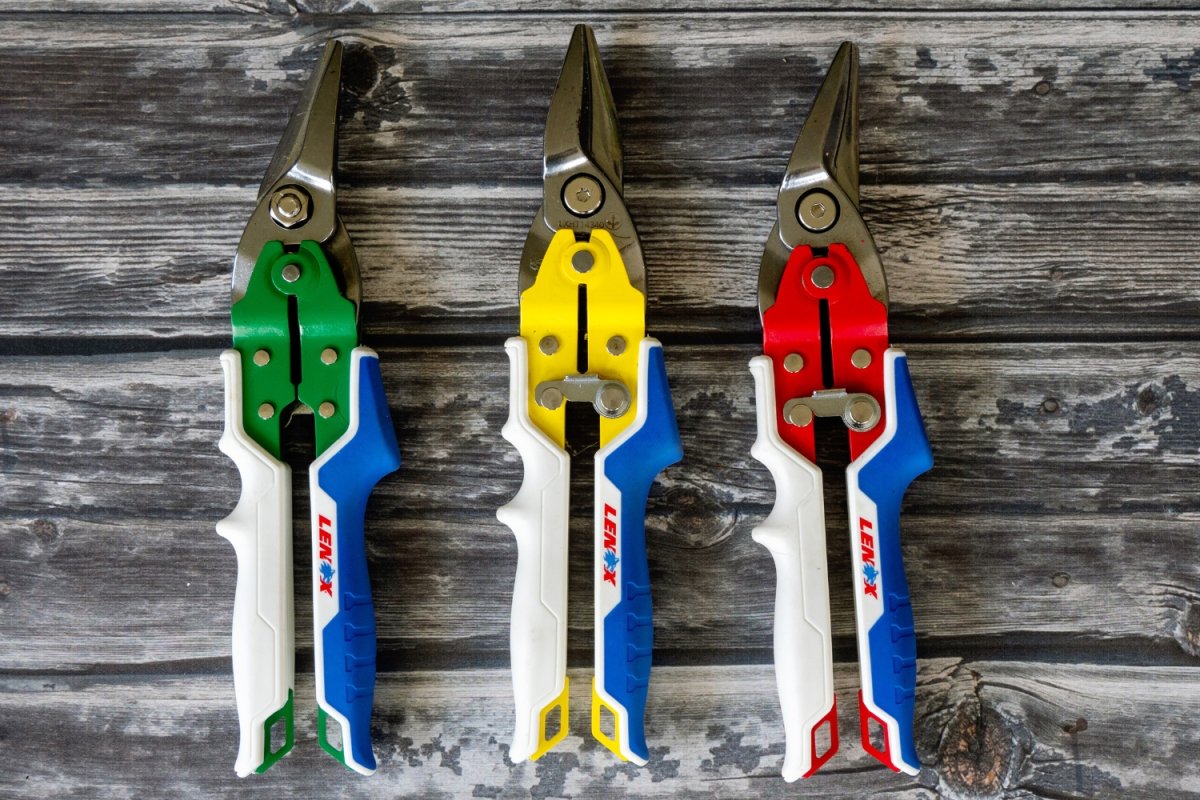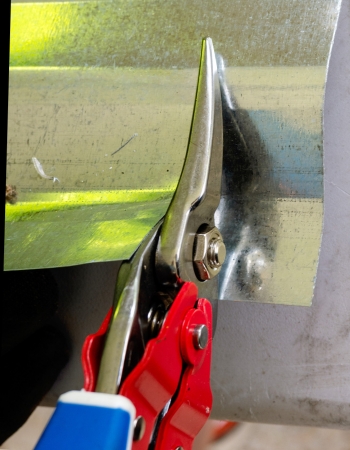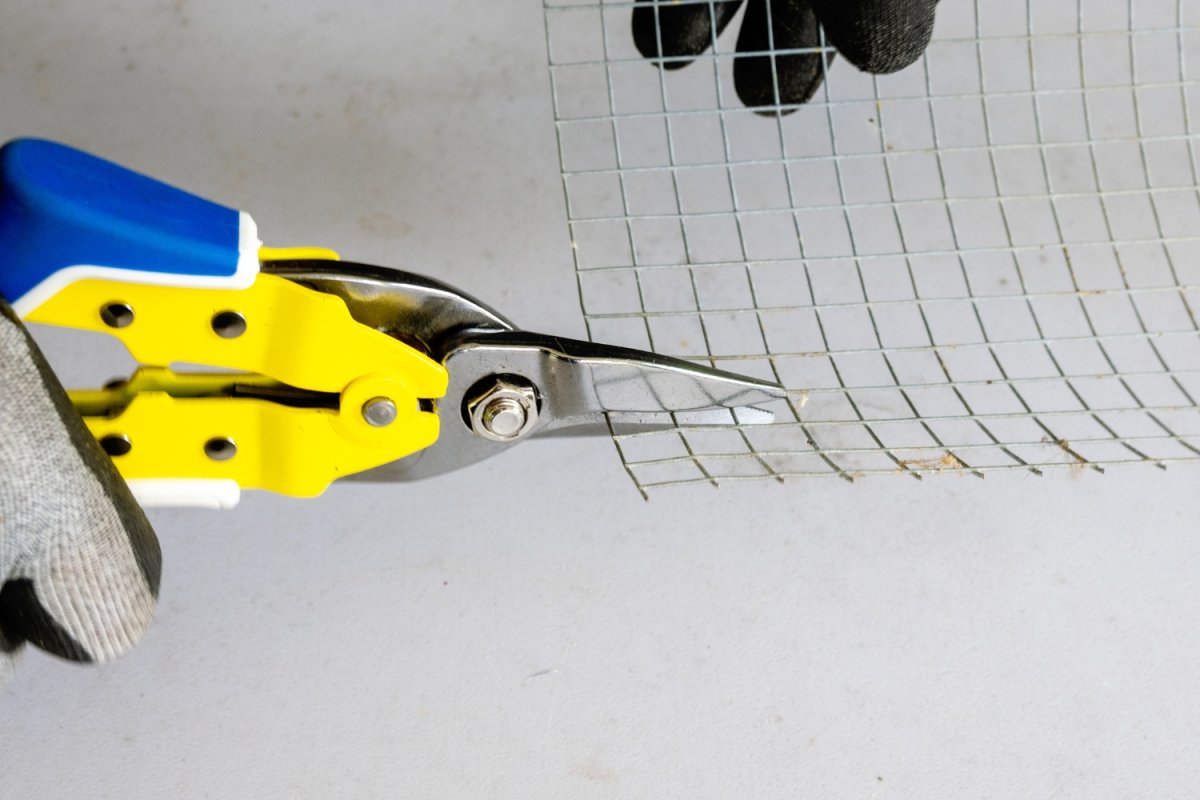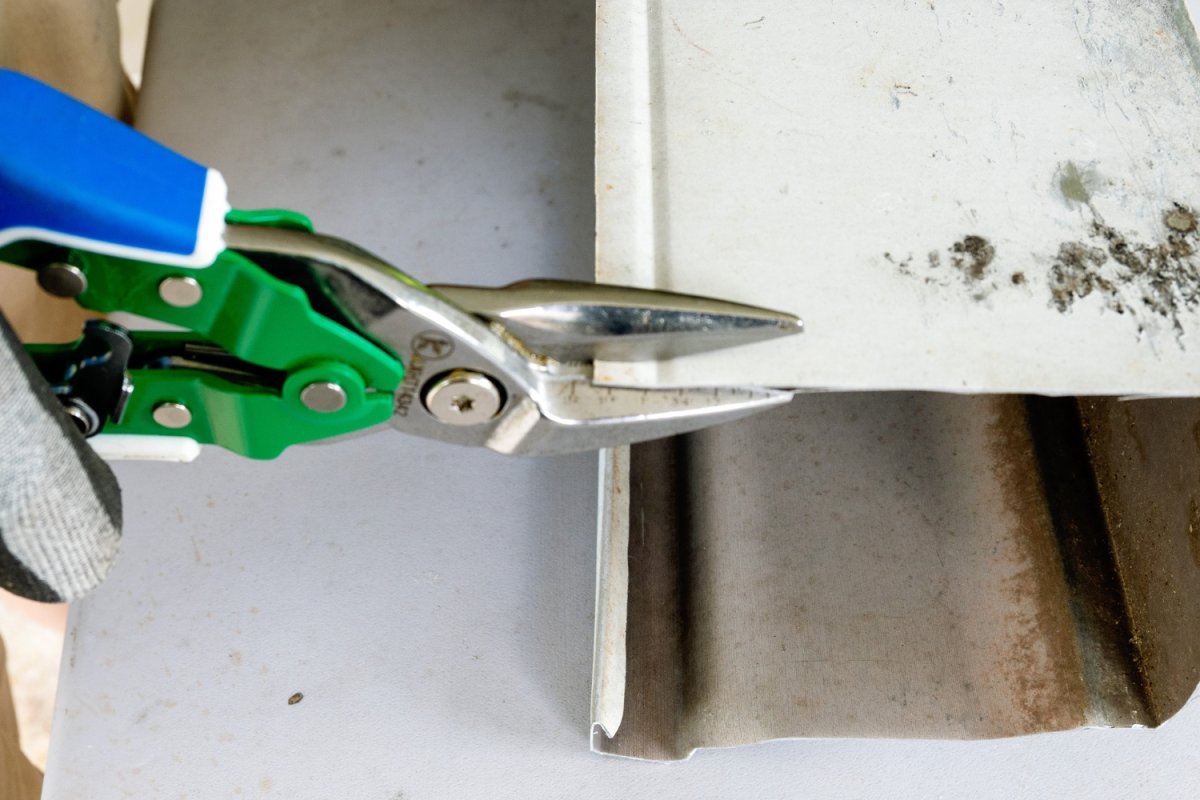

We may earn revenue from the products available on this page and participate in affiliate programs. Learn More ›
A good set of tin snips makes cutting sheet metal easy. When it comes to cutting intricate patterns and working with tougher metals, aviation snips are often the best type of tin snips to choose. Aviation snips have multiple pivot points for the blades and handle, which allow them to provide compound leverage, helping the user to cut through thicker sheet metal with a more compact tool than the old scissors-style metal cutters. Spring-assisted handles and short blades allow for longer, smoother cuts, while options for straight cut, left cut, and right cut enhance maneuverability. I recently tested a three-piece set of Lenox Forged Steel Aviation Snips that perfectly showcased the toughness and controlled cutting ability that makes this type of tin snips so popular.
Massachusetts-based Lenox Tools boasts over a century of blade production experience. It manufactures professional-quality hand tools, power tool accessories, and industrial cutting equipment with an emphasis on innovation. The newest generation of Lenox aviation snips was recognized with a 2021 Pro Tools Innovation Award for its improved design that requires significantly less hand strength and offers better durability than its legacy product. In this review, I will share my observations from testing these snips and detail why I recommend them for a diverse range of metal work.
Lenox 3-Pack Forged Steel Aviation Tin Snips: At a Glance
Rating: 5/5

SPECS
- Tools included: Straight, left, and right aviation snips
- Maximum gauge: 18
- Blade length: 1⅖ inches
- Blade material: Forged steel
- Handle length: 5⅘ inches
- Grip material: Molded polypropylene with rubber overmold grip
What We Like
- Includes straight-cut, left, and right snips
- Tough forged steel blades
- Slip-resistant cushioned handles
- Smooth cutting action
What We Don’t Like
- Latches are not well designed for ambidextrous work
Get the Lenox tin snips at Lowe’s for $59.94.
What are the Lenox 3-pack forged steel aviation snips?
Featuring straight, left-cut, and right-cut aviation snips, this bundle is an affordable option and a quality choice for new DIYers and professionals alike. Aviation snips are arguably the best type of tin snips for general use because they are more compact and powerful than single-pivot tin snips. Each tool measures 10 inches long overall and weighs 15 ounces with 1⅖-inch blades. The blades are made of forged tool steel for strength and durability, and the handles feature rubber overmolded polypropylene grips for nonslip comfort.
I tested each of the Lenox snips on more than 18 linear feet of cuts on an assortment of metals, including 18- and 26-gauge carbon steel sheet metal, 29-gauge corrugated roofing, 24-gauge rectangular HVAC duct, 26-gauge round duct, aluminum gutter, and ½-inch galvanized hardware cloth. I wanted to get a feel for the way they cut through long, short, and curved patterns when testing different materials, as well as whether the edges would hold up. After all of the test cuts were completed, I dropped each of the snips onto a concrete floor 10 times from the top of a 6-foot step ladder to test the overall durability of the tools.
After some cutting, dropping, and more cutting with these snips, I was pleased with the results. Throughout the tests, they performed well on different types of metal without rolling the edges. They felt secure and comfortable in my hands and didn’t seem to require as much effort to make the cuts as cheaper models I’ve used in the past. The drops didn’t seem to have any effect on them or their cutting ability either (although they did chip my basement floor in a few places). This is the kind of tool that a DIYer could buy once for a lifetime of use. For professionals, this would be a great option as an emergency stopgap; many may even realize that a more expensive version from another brand might only be marginally better.

Ergonomics: 5/5
The construction of the grips, width of the handle openings, and compound pivot design made these some of the most comfortable aviation snips I’ve used. The upper and lower hand grips feature two different surface textures to accommodate the needs of the palm/thumb area and fingers differently. In the palm and thumb area, the upper handle has a rubbery elastomeric overmold for cushioned, slip-resistant control. On the lower handles, smooth textured molded polypropylene allows for a little bit of movement as the fingers squeeze the grip. To me, the handle spread was just right, but to others with smaller hands, it might feel too wide.
The handle closure latch moved easily with the thumb and stayed put once it was opened or closed, but it was not easy to manipulate with my off hand. The latches on the straight-cut and left-cut snips were easiest to operate when working with the right hand, and the right-cut snips were easiest to use with the left hand. When working with the opposite hand, I found it more convenient to work the latch with my free hand. Cuts seemed to require less gripping force than most of the cheaper models I’ve used. The lower force requirement and smoother cutting action made the Lenox aviation snips noticeably more capable when cutting thicker-gauge metals.
Performance: 5/5
Lenox’s aviation snips offer a precise fit and finish not found in cheap tools, which made them a pleasure to work with. The blades moved smoothly from the pinch point, or “V,” all the way through to the tips, without any gaps or snags. There was no play in the pivot bolt (which the manufacturer claims will never loosen or separate), so not an ounce of grip strength was wasted. Working with gloved hands, I had no trouble manipulating the latches, maintaining a secure grip, and maneuvering through all the required cuts.
The cutting action was smooth, strong, and easy to control in all of the different metal types and gauges I used to test them. I noticed a few additional convenience features that improved their functionality even further. The blades are laser etched in ⅛-inch increments as a reference to help with precision cutting. Also, micro serrations on the lower blades prevented sheet metal from slipping out of the blades while cutting. With the possible exceptions of working in severely confined areas or with extremely thick metals, the Lenox snips give users the ability to cut most sheet metals in most circumstances.
Cut Quality: 5/5
I included several scraps of textured and shaped sheet metals in the test in order to find out how well the Lenox aviation snips could navigate the materials while producing a clean cut. With regard to cut quality, working with folded or shaped material is one of the toughest tests because the metal can tear or break off at the corners before it passes through the blades. But these snips did not let me down. They were able to cut all the way to their blade tips, reaching well into the corners and rounding them onto the next surface.
The blades on these snips moved easily through long, straight cuts and navigated 5-inch circles without snagging. They cut consistently without requiring an excessive amount of regripping thanks to the serrated lower blades, and they cut cleanly every time without rolling the edges of the metal. The end result was a precise, clean cut with few to no burrs that needed to be sanded off. This held true in the thicker and thinner metals, for cuts through the middle of the sheet as well as narrow end cuts.

Durability: 5/5
I tested the Lenox snips for blade durability as well as overall construction durability. With regard to the blades, I made my first and last cuts in the thickest metal and compared the differences in the amount of pressure required and the cleanness of the cuts from first to last. I started by using the right-cut snips on a piece of 18-gauge sheet metal, performed all of the cutting tests, and finished by cutting 18-gauge sheet metal again. Next, I started with the left-cut snips in the 18-gauge sheet metal. I compared the feel of the slightly used right-cut blade that I had just used against the brand-new left-cut blade. After cutting 18 linear feet of metal, there was no noticeable difference in cut quality or required pressure from the first cut to the last.
The build quality test was even more rudimentary. After the cutting tests were complete, I pushed each of the snips off a 6-foot ladder 10 times and inspected them for damage. The poly handles received a few scuffs and scratches, but the floor ended up worse off than the snips. After 10 falls from the ladder, all three snips functioned perfectly.
Are the Lenox forged steel aviation snips worth the money?
These Lenox aviation snips tackled all of the cutting jobs that I dished out. They were comfortable in hand; easy to squeeze; and made smooth, clean cuts. They appear to be very durable, but only time and extended use will tell the whole story. In my tests, they performed like pro-quality tools.
At a few cents below $60, they are not the cheapest option. You can find a set of cheap aviation snips under $30, but as the saying goes, you get what you pay for. This set costs 33 percent less than a similar set of Midwest brand aviation snips that is popular among contractors. These snips are a value-packed option ideal for budget-conscious DIYers who know that a tool that is worth buying should be a pleasure to use.
Should you buy the Lenox 3-pack forged steel aviation snips?
If you need tin snips—be it for roofing, siding, gutters, HVAC, electrical work, or even for creating art—there are lots of options. For short, straight cuts in hardware cloth or thin sheet metal, almost any kind of tin snip will do. For long cuts across large sheets of material, an offset snip will be the best choice. Bulldog snips specialize in cutting thick sheets of tough materials like stainless steel, while long-nose snips make longer straight cuts.
Aviation snips have become so popular because they are more compact, powerful, and nimble than other types of sheet metal cutting tools. The Lenox forged steel aviation snip kit is a great option because it comes with the three of the most commonly used cutters for the widest range of sheet-metal projects. The overall tool quality is excellent for the price, and the snips have numerous comfort and convenience features that make work easier. Whether you’re a novice buying your first set or an expert looking for a great value, these could be the right general-purpose tin snips for you.
Get the Lenox tin snips at Lowe’s for $59.94.
Meet the Tester
Mark Wolfe is a product tester and writer with an extensive background in the nursery and landscaping industries. He kept his tool box well stocked in order to build or repair fences, walls, irrigation systems, and equipment on any given day. Now he tests and writes reviews about the latest hand tools, lawn care products, outdoor power equipment, and other outdoor living goods.
